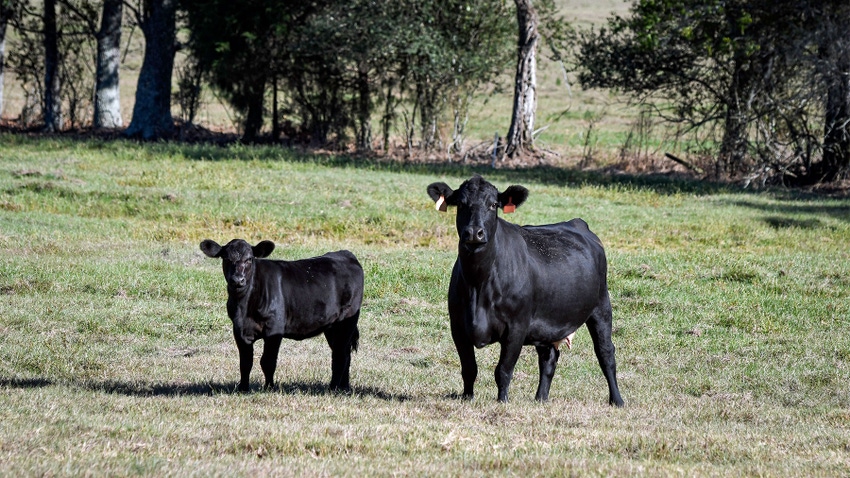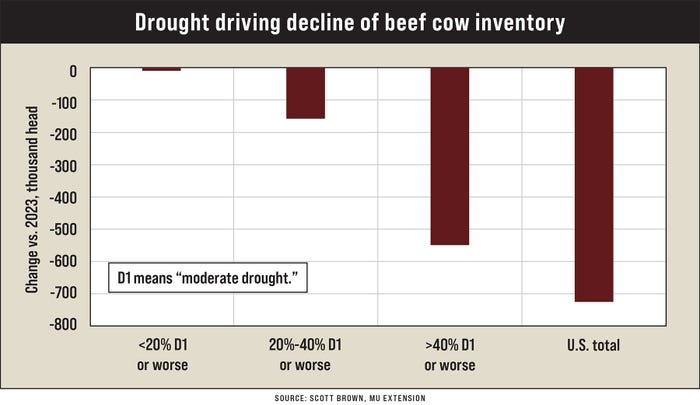February 5, 2024

The annual USDA National Agricultural Statistics Service cattle report confirmed the expectations of many industry analysts, with a declining beef cow inventory number for the fifth consecutive year.
At 28.2 million head, the beef cow herd as of Jan. 1 is 10.9% below the previous cyclical peak. The previous three inventory liquidation cycles have seen beef cow numbers decline by 11.5% (2006-14), 7.9% (1996-2004) and 17.3% (1982-90).
With the total number of heifers kept for beef cow replacement also reported lower to begin the year, it is likely that numbers will decline again in 2024.
Although every cow-calf producer faces a unique set of factors when making the decision to increase or reduce herd size, financial returns and the availability of forage supplies tend to stand out as important components of herd size changes at the national and state levels.
Although the moisture and forage situation improved in many parts of the country last year relative to 2022, many important cow-calf areas continue to face adverse impacts from drought.
Drought dictates herd changes
Severity of drought during 2023 has been an important driver in producer decisions to reduce the cow herd.
In 23 of 50 states, the weekly average of area suffering moderate drought (D1) or worse was below 20% in 2023. Only eight of these states registered declines in their beef cow herd, with only a 6,000 head (-0.1%) decline in total.
The top 15 beef cow inventory states in this situation included Kentucky (1.3% growth), Arkansas (2.2% reduction), Wyoming (no change) and California (2.2% reduction).
For the 17 states that suffered moderate or worse drought at a 20% to 40% extent last year, cow numbers declined by nearly 162,000 head (-1.7%). Only six of these states experienced beef cow growth.

South Dakota, the fifth-largest state in terms of beef cow inventory, declined by 2%. Montana, the seventh-largest, declined inventory by 1.6%.
The largest herd liquidation occurred in states that averaged more than 40% of area in moderate drought or worse in 2023. These 10 states lost 548,000 beef cows (-4.0%).
The four largest beef cow inventory states found themselves in these conditions, including Texas (-4.3%), Oklahoma (-3.5%), Missouri (-5.9%) and Nebraska (-3.9%).
Focus on forage
Although beef industry economics during 2023 might have suggested far less liquidation than what was reported, when there is not enough grass, there is not enough grass.
Feeder prices are expected to remain financially lucrative into the medium term, but the forage availability situation must improve in key cow-calf production areas in order to begin rebuilding the herd on a national level.
Brown is a livestock economist with the University of Missouri. He grew up on a diversified farm in northwest Missouri.
Read more about:
BeefAbout the Author(s)
You May Also Like




